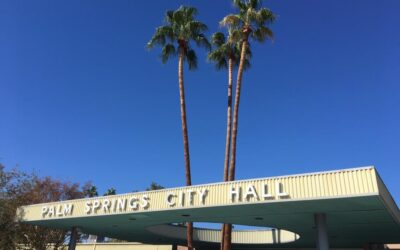Last month, the Palm Springs City Council postponed the approval of the Palm Springs International Airport’s (PSP) conceptual development plan, citing the need for more public input. This led to a community meeting on June 4 at the Palm Springs Convention Center, where about 150 residents from across the Coachella Valley gathered to learn about the airport’s master planning project and provide feedback.
Record Passenger Numbers and Future Projections: Palm Springs International Airport experienced a record 3.2 million passengers in 2023, and projections estimate that by 2042, the airport will need to accommodate six million passengers. To meet this anticipated growth, the airport plans to increase its number of gates from 18 to 32. The comprehensive development plan, which is estimated to cost around $2.3 billion, will be funded through airport revenue, grant funds, and federal government support.
Plan Highlights: The development plan includes the construction of a new concourse north of the existing terminal, a new 45-foot-tall rental car facility, additional parking, and various other improvements. The upgrades aim to ensure the airport continues to function efficiently amid increasing passenger numbers.
“We’re about 10 years behind where we need to be,” said PSP Executive Director Harry Barrett. “My focus right now is catching up to where we need to be to make sure that the airport continues to function efficiently.”
Community Concerns and Feedback: Residents’ biggest concerns at the meeting included the potential increase in vehicle traffic, especially rental cars, and the desire for more public transportation options. They also expressed concerns about preserving the airport’s unique charm and architectural qualities.
These concerns echoed those of city council members who, during a meeting on May 9, decided to delay approval of the conceptual development plan. They wanted to hear more about possible traffic problems and solutions, as well as expanding transit options, including buses and connections to the future Coachella Valley rail project.
Next Steps: Airport officials plan to return to the council with the conceptual development plan sometime in the fall after conducting more public input meetings over the summer. The PSP Master Plan Open House allowed residents and stakeholders to participate in the airport’s future development. The event allowed the community to hear about the progress made in the master planning process and to share their priorities for the airport’s evolution.
Sustainability and Historical Considerations: The project team is committed to enhancing the traveler experience while addressing sustainability and historical considerations. Attendees at the open house learned about potential short-, medium-, and long-term improvements, including solar panels, taxiway enhancements, and space for vertiport activity.
Protecting Historical Integrity: The project team is working closely with the city’s Preservation Office to ensure that any changes or renovations to the terminal stay true to the integrity of the original Donald Wexler design. This commitment underscores the importance of maintaining the airport’s historical and architectural significance.
Why Expansion is Necessary: Since the 1980s, the number of people flying to and from Palm Springs has nearly quadrupled. The expansion is being planned to accommodate this continued growth. The airport’s master planning process, which is required by the Federal Aviation Administration (FAA) approximately every decade, sets broad goals and priorities for future development, with detailed design and planning for specific projects to follow.
Funding and Timeline: The full four-phase project is estimated to cost $2.3 billion. The first two phases, costing $880 million and $1.4 billion, respectively, will involve planning and building the new northern terminal and rental car facility, which could be completed in about 3½ to five years. The project will be funded through a combination of federal grants and bonds issued by the city, which will be repaid with airport revenues. City tax revenues cannot be used to fund the construction, as the airport is financially independent of the city.
Alternative Plans: The commission also considered a plan that called for all new airport structures to be built on the south side of the existing property, estimated to cost $2.7 billion. However, the preferred plan was chosen for its lower cost, shorter timeline, and reduced impact on airport operations.
Looking Ahead: The expansion plan aims to ensure that the Palm Springs International Airport can accommodate future growth while maintaining its operational efficiency and unique architectural charm. As the planning process continues, residents will have multiple opportunities to provide input and shape the future of their airport.
For more information about the PSP Master Plan, visit the project website at palmspringsairportmasterplan.com.




